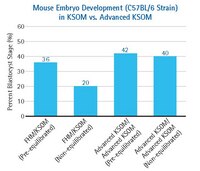Combinatorial Contact Cues Specify Cell Division Orientation by Directing Cortical Myosin Flows.
Sugioka, K; Bowerman, B
Dev Cell
46
257-270.e5
2018
Show Abstract
Cell division axes during development are specified in different orientations to establish multicellular assemblies, but the mechanisms that generate division axis diversity remain unclear. We show here that patterns of cell contact provide cues that diversify cell division orientation by modulating cortical non-muscle myosin flow. We reconstituted in vivo contact patterns using beads or isolated cells to show two findings. First, we identified three contact-dependent cues that pattern cell division orientation and myosin flow: physical contact, contact asymmetry, and a Wnt signal. Second, we experimentally demonstrated that myosin flow generates forces that trigger plasma membrane movements and propose that their anisotropy drives cell division orientation. Our data suggest that contact-dependent control of myosin specifies the division axes of Caenorhabditis elegans AB, ABa, EMS cells, and the mouse AB cell. The contact pattern-dependent generation of myosin flows, in concert with known microtubule/dynein pathways, may greatly expand division axis diversity during development. | 30032990
 |
Laser-assisted Lentiviral Gene Delivery to Mouse Fertilized Eggs.
Martin, NP; Myers, P; Goulding, E; Chen, SH; Walker, M; Porter, TM; Van Gorder, L; Mathew, A; Gruzdev, A; Scappini, E; Romeo, C
J Vis Exp
N/A
N/A
2018
Show Abstract
Lentiviruses are efficient vectors for gene delivery to mammalian cells. Following transduction, the lentiviral genome is stably incorporated into the host chromosome and is passed on to progeny. Thus, they are ideal vectors for creation of stable cell lines, in vivo delivery of indicators, and transduction of single cell fertilized eggs to create transgenic animals. However, mouse fertilized eggs and early stage embryos are protected by the zona pellucida, a glycoprotein matrix that forms a barrier against lentiviral gene delivery. Lentiviruses are too large to penetrate the zona and are typically delivered by microinjection of viral particles into the perivitelline cavity, the space between the zona and the embryonic cells. The requirement for highly skilled technologists and specialized equipment has minimized the use of lentiviruses for gene delivery to mouse embryos. This article describes a protocol for permeabilizing the mouse fertilized eggs by perforating the zona with a laser. Laser-perforation does not result in any damage to embryos and allows lentiviruses to gain access to embryonic cells for gene delivery. Transduced embryos can develop into blastocyst in vitro, and if implanted in pseudopregnant mice, develop into transgenic pups. The laser used in this protocol is effective and easy to use. Genes delivered by lentiviruses stably incorporate into mouse embryonic cells and are germline transmittable. This is an alternative method for creation of transgenic mice that requires no micromanipulation and microinjection of fertilized eggs. | 30451224
 |
DUSP9 Modulates DNA Hypomethylation in Female Mouse Pluripotent Stem Cells.
Choi, J; Clement, K; Huebner, AJ; Webster, J; Rose, CM; Brumbaugh, J; Walsh, RM; Lee, S; Savol, A; Etchegaray, JP; Gu, H; Boyle, P; Elling, U; Mostoslavsky, R; Sadreyev, R; Park, PJ; Gygi, SP; Meissner, A; Hochedlinger, K
Cell Stem Cell
20
706-719.e7
2017
Show Abstract
Blastocyst-derived embryonic stem cells (ESCs) and gonad-derived embryonic germ cells (EGCs) represent two classic types of pluripotent cell lines, yet their molecular equivalence remains incompletely understood. Here, we compare genome-wide methylation patterns between isogenic ESC and EGC lines to define epigenetic similarities and differences. Surprisingly, we find that sex rather than cell type drives methylation patterns in ESCs and EGCs. Cell fusion experiments further reveal that the ratio of X chromosomes to autosomes dictates methylation levels, with female hybrids being hypomethylated and male hybrids being hypermethylated. We show that the X-linked MAPK phosphatase DUSP9 is upregulated in female compared to male ESCs, and its heterozygous loss in female ESCs leads to male-like methylation levels. However, male and female blastocysts are similarly hypomethylated, indicating that sex-specific methylation differences arise in culture. Collectively, our data demonstrate the epigenetic similarity of sex-matched ESCs and EGCs and identify DUSP9 as a regulator of female-specific hypomethylation. | 28366588
 |










